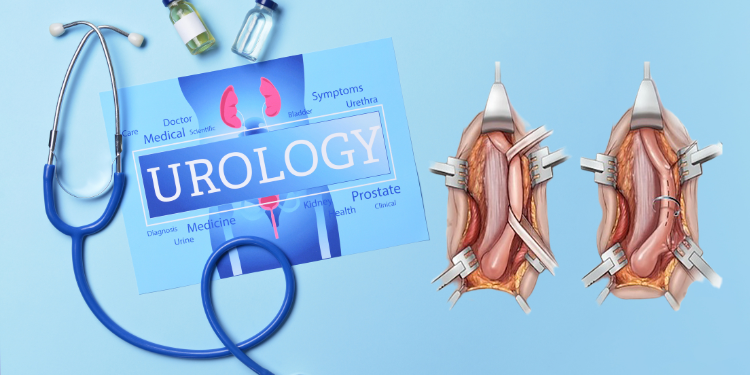
Urethroplasty in Jaipur
Urethroplasty is an open surgical reconstruction or replacement of the urethra that has been narrowed by scar tissue and spongiofibrosis (urethral stricture). Urethroplasty is the gold standard for urethal reconstruction with the best and most durable results.
What is an excision and primary anastomosis (EPA) urethroplasty?
For short strictures that involve the bulbar urethra (the part of the urethra under the scrotum and up to the prostate), a segment of the scarred urethra can be completely excised. The two cut ends of the urethra are then sewn together.Excising a short segment of urethra and sewing the ends together typically has the best long term surgical results – which approach 95%. Stricture excision cannot be performed in the penile urethra or for long strictures of the bulbar urethra because there will be too much tension when trying to bring the two cut ends together. Tension on the suture line leads to surgical failure, and potentially to penile shortening and curvature.
What is a graft urethroplasty?
A graft is a piece of tissue that is transferred from one part of the body to another. A graft does not have its own blood supply, so it relies on the blood supply of the host (where it was transferred to) to survive. Grafts are used to increase the size of the narrow urethra by patching it, rather than a total replacement.Typical grafts that are used to reconstruct the urethra are harvested from the extra-genital skin or from the inner lining of the mouth. The mouth graft is known as a "buccal graft".
The lining of the mouth (cheek) is a wet and pliable tissue that makes an excellent substitute urethra. A sliver of tissue can be easily removed with no consequences. Pain is minor and feels the same as when one accidentally bites his inner cheek. The mouth heals very quickly – usually in less than 1 week.
Ureteral Stenting and Nephrostomy
Ureteral stenting and nephrostomy help restore urine flow through blocked ureters and return the kidney to normal function. Ureters are long, narrow tubes that carry urine from the kidneys to the bladder. They can become obstructed – and urine flow blocked – as a result of various conditions. Your doctor may use image guidance to place a thin, flexible tube called a stent into the ureter to restore urine flow. If a stent cannot be placed, he may perform a nephrostomy, during which a tube is placed through the skin into the kidney and connected to either an external drainage bag or the bladder.Tell your doctor if there’s a possibility you are pregnant and discuss any recent illnesses, medical conditions, allergies and medications you’re taking. Your doctor may advise you to stop taking aspirin, nonsteroidal anti-inflammatory drugs (NSAIDs) or blood thinners several days prior to your procedure and instruct you not to eat or drink anything after midnight the night before. Take regular medication with sips of water. Leave jewelry at home and wear loose, comfortable clothing. You may be asked to wear a gown. If you are not to be admitted to the hospital, plan to have someone drive you home afterward.



Book Appointment